Department News
[The Hankyoreh] Professor Sung-Hoon Ahn, consulting on "Condition of Appropriate Technology"
Author
yeunsookim
Date
2021-09-24
Views
494
Tanzania's Sustainable Power Life Made by "10,000 Won Chip"
⑰ Conditions of Appropriate Technology Learned in International Sustainable Technology ContestIn the era of ICT revolution, wherely cutting-edge technology is the best, it contributes to improving the lives of residents even with cheap technology. Homes in northern Tanzania without a power meter unable to pay for continuous electricity life, it is possible to measure usage with cheap chips, and time for income generating activities increases by more than 2.5 times a day. Beyond the advanced society perspective of "high-techly", the use of appropriate technologies should be improved in developing countries at the same time.
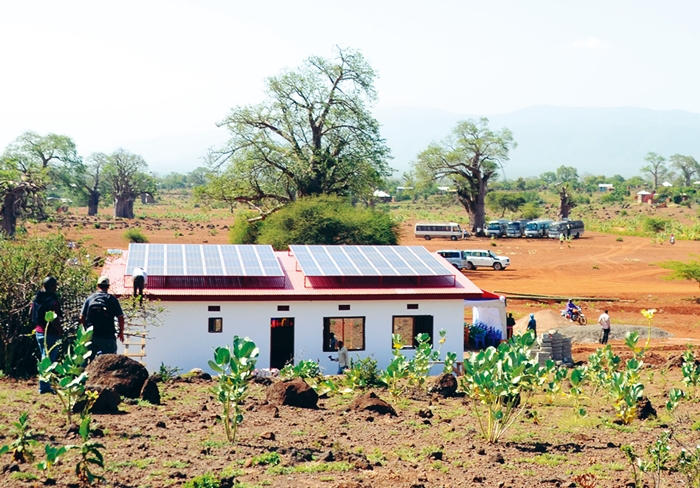
A 10kW solar power generation center operated by the Tanzania- Korea Appropriate Science and Technology Center since February 2018 in Mcalama Village, Kilimanjaro, Tanzania.Do seashells absorb arsenic? I didn't know. Until I heard the announcement of the participating teams in the International Sustainable Technology Contest held at Seoul National University. Ewha Womans University's 'Rescue the Earth' team said they would make an arsenic treatment purifier using seashells and bentonite thrown away the Chittagong beach in Bangladesh. Arsenic is a poison used in historical medicine during the Joseon Dynasty, and bentonite is a clay mineral formed due to the action of sedimentary rocks that recrystallize when volcanic ash is compacted with seawater from the sea.
“The Himalayan rocks are rich in sulfides (rocks with a high arsenic content), which are eroded into groundwater. So, people in Bangladesh use groundwater exposed to arsenic as drinking water. Up to 32.4L of water can be purified withe purifier that costs about 13 won.” This idea was awarded the 'Appropriate Technology Society President's Award' at this competition. Quiz here. Which team's idea is the appropriate technology?
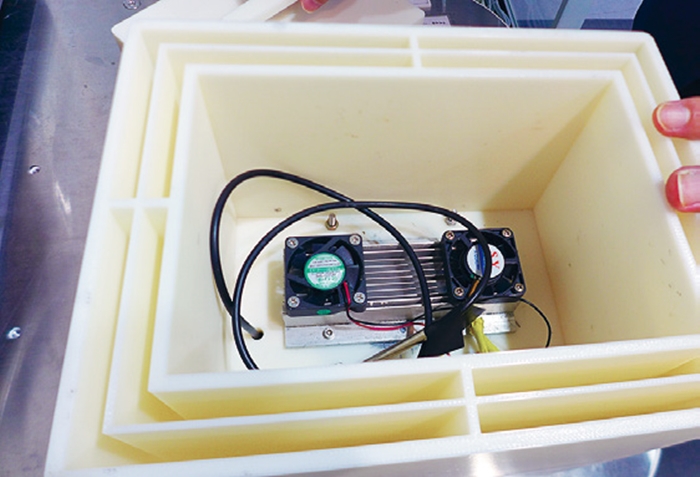
Vaccine refrigerated box made with 3D printer. It is an appropriate technology product that can lower the material cost to the $5 range depending the printer specifications. Existing products that maintain a constant refrigeration temperature are priced at $50 each, making it difficult to distribute in low-income areas.
No. 1. If there is a 3D printer, we will share the design of the vaccine box that can be printed anywhere at a reasonable cost, and the technology for managing and maintaining the vaccine through wireless monitoring. (Seoul National University '3DP Vaccine Carrier' team)
No.2. We will make high value-added styrene monomers, that is, raw materials for styrofoam and synthetic rubber, using technology to remove salt and foreign substances from waste Styrofoam collected from the sea. (Chonnam University 'Whale' team)
No. 3 We will make a natural fiber composite from banana stems to replace plastic products such as automobile interior parts. (Team Biointerio, RWTH Aachen University, Germany)
I will give you a hint. Sung-Hoon Ahn, president of the Society for Appropriate Technology, Professor of Mechanical Engineering at Seoul National University, points out the following three conditions for appropriate technology. 'Sustainability', that is, can it be sustainable without destroying the environment? 'Payability', can it be maintained by ordinary people's income? 'Human-centered', does it give people a healthy and safe environment? Does it reduce or take away jobs?
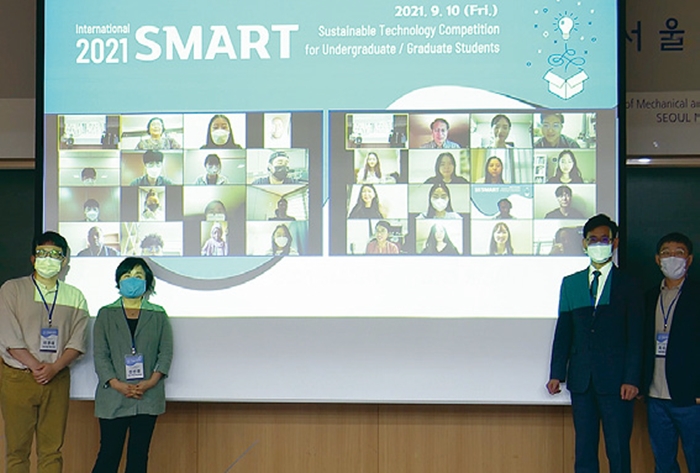
The final of the International Sustainable Technology Contest heldline at Seoul National University the 10th. 30 teams from 4 countries including Korea, Tanzania, Germany and France participated.
Professor Ahn showed two examples of appropriate technology in the laboratory in the Department of Mechanical Engineering in the university, which is also used as a base for solving global problems in Korea and Tanzania. It is a 'smart grid' (intelligent power grid) applied to remote Tanzania and a 'smart factory' (intelligent production plant) system being tested at three factories in Korea. How did appropriate technology come from two fields where the modifier of 'state-of-the-art' seems more appropriate?
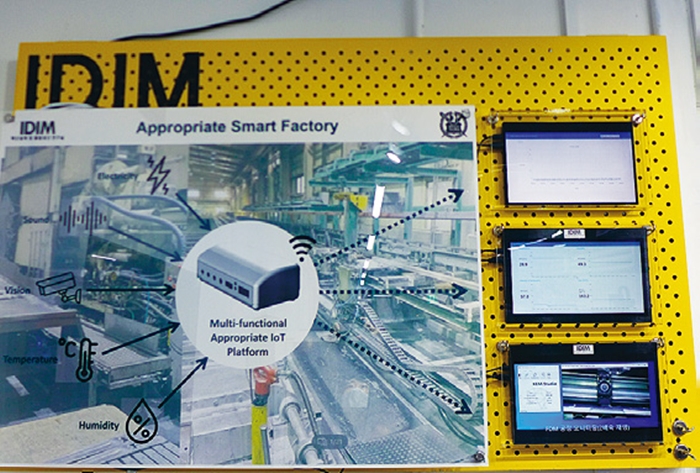
Appropriate smart factory concept.
using official development assistance (ODA) and laid out a smart grid.
After that, the life of the villagers changed. The cost of charging a cell phone has become cheaper. As it became easier to turn the lights at night, the time for income activities increased 2.5 times to 10 hours a day. The income of households engaged in services and other tertiary industries has nearly tripled. People have become accustomed to buying 'credits' that can use electricity in advance. A local person is the power plant manager and manages electricity rates and power plant systems.
To this end, Professor Ahn's team built a smart grid with locally sustainable cost and technology.
“If an independent solar power grid is installed in an underdeveloped country, it usually lasts about 5 years. People don't pay electricity bills and maintenance fees, so when the battery life runs out, the electricity is cut off. Then life will return to its original state. We solved that problem by installing smart meters (power meters) based low-cost chips in the 10,000-won range. The smart meter transmits the electricity consumption of each household to the power plant. Thanks to this, we were able to create a system that uses electricity as much as we paid for it.”
The activity of 'low-priced chips in the 10,000-won range' continues in the field of small and medium-sized enterprises (SMEs) in Korea. Professor Ahn's team installed the chip, a small camera, and a warning light a cutting device in the factory. It is a device where finger amputation accidents occur frequently. The chip contains the algorithm. So, when the camera catches a 'non-machine shape' such as a finger, the warning light flashes. This is to draw the attention of workers.
“Accidents usually happen in the blink of an eye. Because I couldn't sleep at night, because I unlocked the safety device to speed up my work, because another collaborator made a mistake, and so. This can happen even with good safety training. Education alone is not enough. We need a system that can prevent accidents.”
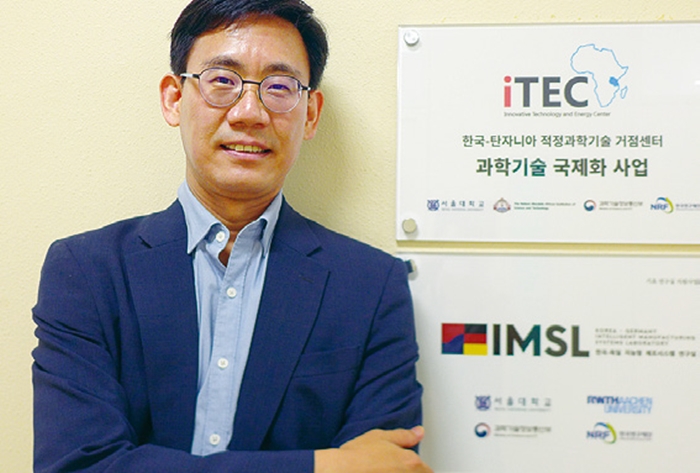
Sung-Hoon Ahn, president of the Society of Appropriate Technology (Professor of Mechanical Engineering, Seoul National University) is explaining the appropriate smart factory system introduced to three small and medium-sized enterprises in Korea. An 'appropriate smart factory' is an intelligent production factory designed to suit the circumstances such as the manpower of SMEs. Professor Ahn explained that by doing this, it is possible to understand what is happening to products and devices during production and improve them.
In his view, the 'appropriate technology' necessary for SMEs is low-level software and easy-to-manage hardware. This is because most SMEs do not have engineers who can handle high-level software such as artificial intelligence or computers with high computing power.
The situation is similar in developing countries. With the development of information and communication technology (ICT) and artificial intelligence and robot technology, the world is entering the era of the fourth industrial revolution, but most of the underdeveloped countries are unable to escape from labor-intensive industries. Prof. Ahn predicted that more appropriate technology ideas should come out so that such regions could also develop together.
“If the 4th industrial revolution spreads and it becomes easier to produce a variety of products in small quantities in advanced countries, the industrial structure will change drastically. Industries in developing countries based labor-intensive industries will be hit hard. We need to help preserve jobs in the 4th industrial revolution and allow the existing labor force to move into a new era together.”
Now, let's get back to the quiz. Whiche is the right technology? And in this competition, 30 ideas from the finalists from 4 countries including Korea, Tanzania, Germany, and France were all about sustainable technology, that is, technology that helps mankind to live Earth. However, appropriate technology should also consider the 'affordability' of local people among sustainable technologies. Taking that into consideration, the answer is number 1.
Ernst Schumacher, an economist who coined the concept of appropriate technology, wrote in his 1965 book <Small is Beautiful>: “The main task of technology will be to relieve the burden of work that humans need to preserve and develop its potential.” It would have been very difficult if he had been alive and had watched the judging of this competition. I would like to give a prize to all the participants.
Kyungsook Lee, Science Storyteller
Advisor: Sung-Hoon Ahn, Professor, Department of Mechanical Engineering,
Seoul National University Guide to Living in Seoul Seoul N (www.seouland.com)
Go to editorial article from the editorial team http://www.seouland.com/arti/culture/culture_general/8793.html

